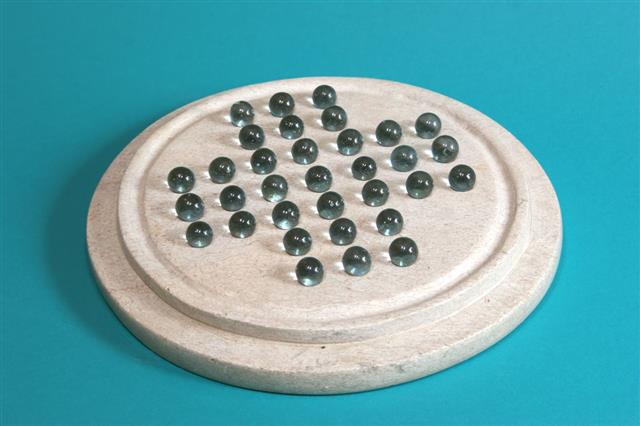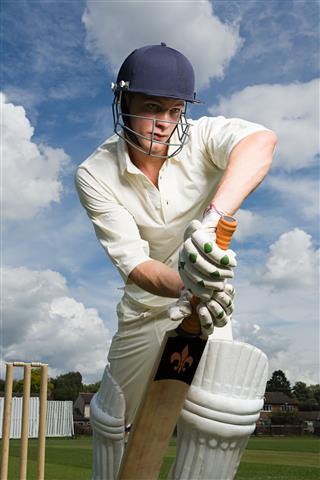
If you’re a sports fan, you have definitely heard the word "hat trick" being thrown around at some point or the other. But because of its wide usage, it is often hard to deduce what the term means in each specific sport. So we make it easy with this article that defines what the term hat trick means in different sports, along with its origin.
Speedy Gonzales!
In the NHL, the fastest-recorded natural hat trick was achieved by Chicago Blackhawks player Bill Mosienko, at 3 back-to-back goals in just 21 seconds!
Being an enthusiast of any sport, it is very important to understand the terminology used to better understand and appreciate the game. If you were watching a soccer match, and said, “Yeah, touchdown!” when a goal is scored, you are in for the wrath that is going to be showered down upon you by your friends and other fans. But that’s what is so awesome about the Internet! Today, if you are unsure about something, all you have to do is enter the magic keywords into your preferred search engine, and voilà! You are exposed to new discoveries and better knowledge about things you thought you knew so well!
So here we are, sports enthusiasts just like you, trying to understand the “Whats”, the “Whens”, and the “Whys” behind the words that fuel the adrenaline already triggered by a game. And the best part is, this is a no-frills subject, because we only focus on one of the most universal sporting phrases out there―the “Hat Trick”. Used in varied sports from cricket, to soccer, rugby, baseball, and hockey, amongst others, while the crux remains the same, what you achieve with a “hat trick” varies with each sport. We bring you the definition of a hat trick, along with its origin and usage in each sport.
Hat-Trick: Definition And Origin
Before we dive into what popularized the usage of the term, we have to know what a hat trick means in general. It is essentially an achievement, by either the offensive or defensive player in a game, who achieves a feat in numbers of three, within a given time frame or within the stipulated rules, completing which would earn you a “hat trick”. Confused still?
Based on a definition given by the Oxford Dictionary (that is slightly paraphrased), “A hat trick is three successes of the same kind within a limited period …” This could be the scoring of three goals, in games like soccer, hockey, water polo, or the taking of three wickets or three strikes like in cricket and baseball, respectively. But beyond just gaining a three of a kind, certain parameters must be followed (which varies with each sport) in order for it to be called a “hat trick”.
The most widely accepted fact indicates that the word was first used in 1858 in the game of cricket.
According to the legend, back in those days, the fans would hold a collection of proceeds for any player who performs exceptionally in a game, and that collection is awarded to the player. So when a bowler named H. H. Stephenson took three wickets consecutively with three successive balls, the observers held the customary collection, and they bought a cap/hat with the proceeds and gifted it to him. And, thus, the feat of achieving a three of a kind came to be known as a hat trick. So, we covered the “hat” bit. But what about the “trick”?
Back in the 19th century, magicians started experimenting and performed the famous hat trick that we know of today that included pulling rabbits, doves, and whatnots out of a top hat. That became known as the “Hat-Trick”. Now in the sport, getting the three of a kind was an exceptional feat, and seemed like a magic trick. Which is another explanation for why it is named the way it is!
So now that we know the basic meaning and history behind the term, let us see how it permeated into so many different sports and what meaning it took on in each of them.
Meaning Of “HAT-Trick” In Different Sports
In Cricket
● In the game that started it all, we have already looked at the origin of the term. We know now that in cricket, scoring a hat trick means the same player taking three consecutive wickets. But even there, we have a couple of variations.
● The catch here is, while it has to be consecutive, it can occur even when the bowler is interrupted by an over bowled by another player, or by the end of an innings and the start of a new one.
● For example, in Test cricket, you could take a wicket in the last ball of the innings, then another two in the next innings, provided they are taken by the same player in consecutive turns.
● There have been only 41 hat tricks till date in Test cricket; 36 in ODIs and 3 in the new format, Twenty20.
● When a player takes four wickets in four consecutive balls, it is either called a “four in four” or more commonly a “double hat trick”. A “triple hat trick” is the term given to the achievement of five wickets in five consecutive balls.
In Hockey
● In this game, a hat trick can be three goals by a player at any point in the game, and doesn’t have to be consecutive goals. In the event that the goals were made one after the other, it is called a “natural hat trick”.
● Today, the game that is most commonly known to use and witness hat tricks is the game of ice hockey. The game became popular in America around the same time that cricket was popularized in other countries, which is how the term slowly percolated. But there are three varying explanations given to the term’s origin in this game.
● According to the first narrative, dating back to the 1940s, Alex Kaleta of the Chicago Blackhawks was walking around in Toronto, prior to his match against the Toronto Maple Leafs. He was searching for a hat and found a man by the name of Sammy Taft. So he sees this swanky gray fedora with a gray trim, and he really digs it, but he didn’t have enough paper to buy it. So Taft makes an offer to Kaleta, telling him that if he were to score three goals in the upcoming match, the former would gift him the hat free of charge. As it turned out, Kaleta took it seriously, scored four goals, and Taft kept his word. Enter, the hat trick in hockey.
● This next story actually features a hat company. In Guelph, Ontario in the 1850s, the Guelph Biltmore Mad Hatters were sponsored by Biltmore Hats (thus the name!). They supposedly had a custom of gifting a brand new fedora to any Biltmore player who could score three goals in a game.
● The final legend is based in 1960s’ Montreal. Here, a hat manufacturer by the name of Henri Henri would award a hat that’s free of cost to a player who would score three goals in any game at the Montreal Forum.
● Ultimately, the accepted narrative in the NHL Hall of Fame, and hockey fans in the original Kaleta story.
● Mario Lemieux made history by being the only player to make the “five-goal hat trick”, also known as the “quintella”. In this move, he scored on every possible game situation; by scoring a goal each in shorthanded, on a powerplay, an empty net goal, a penalty goal, and on even strength.
● A “Gordie Howe hat trick” (named after the player) is one where the player scores his goal, assists another player in a goal, and gets into a fight. Traditionally, this doesn’t fulfill the requirement of a hat trick. Howe himself only achieved the feat twice in his career, both against the Toronto Maple Leafs.
● A goal scored in overtime is generally not counted in a hat trick. But in the “DC hat trick”, you have to score the third goal in overtime shootout.
● Bigger is better in Texas, and a “Texas hat trick” is one where there are four goals scored in a single game by a player.
● The most infamous one by far is the “rat trick”. The term was coined by John Vanbiesbrouck of the Florida Panthers for a feat achieved by his teammate and captain Scott Mellanby. Before their match, Scott killed a rat in the locker room with his hockey stick and then went on to score a hat trick in the match. Eventually, the Panthers’ fans were so taken by it that, in all the following matches of the team in the year 1993, if a player scored a hat trick, the fans would throw plastic rats on the ice as a sign of respect. But the fun eventually ended when a penalty was stipulated for such action, where the home team would be penalized for such an act.
● Interestingly, you can still throw hats as a mark of respect, and there is no penalty on that.
In Soccer (Football)
● In soccer, a player scoring three goals in a single game at any point of time is known as a hat trick. Any goal scored in a penalty shootout is not added towards a hat trick, but shots taken in added time and extra time still count.
● A player who achieves this is awarded with the match ball.
● A “perfect hat trick” is a type of hat trick where the individual player scores one goal with his left foot, one with his right, and one as the result of a header. This can be achieved in any order.
● Three consecutive goals by a player is called a “flawless hat trick”.
In Rugby
● In both the rugby union and rugby league, a hat trick occurs when a player achieves three or more tries in a game.
● A “full house” occurs when a player scores a try, a conversion, a penalty goal, and drop goal.
● As with the other games, the player who achieves either of these feats is awarded with the match ball.
In Baseball
● In baseball, a hat trick occurs when the batter gets three strikeouts in a single game.
● This is one of the only games where the term ‘hat trick’ takes on a negative connotation (for the most part at least!).
● In the off chance that it is used in positive light, a hat trick is also used to refer to a player who scores three home runs in a single game.
● If a player strikes out four times in a game, it is called the Golden Sombrero.
● More than that (five or six strikeouts) is either the Titanium or Platinum Sombrero.
In Water Polo
● Again, the scoring of three goals by a single player is a hat trick in water polo.
In Golf
● To earn a hat trick in golf is even harder, because you need to win three consecutive championships, or events to earn the tag!
In Lacrosse
● A game which makes the scoring of a hat trick look easy, lacrosse too requires an individual to score three goals to achieve the hat trick.
In Darts
● If you score three consecutive bulls-eyes in a game of darts, you have achieved the hat trick.
In Cycling
● Winning three stages in a single tour, or winning three consecutive tours gains you a hat trick in this sport.
In Poker
● Seen very rarely, a hat trick in poker occurs when a single hand played in one round eliminates three players simultaneously.
In Motor Racing
● You have to either win three races successively or win the same event thrice in a row to achieve a hat trick here.
● Securing pole position, achieving the fastest lap, and winning the race―all in one, also counts as a hat trick.
In Marbles
● If a player hits all the marbles in a single run, it counts as a … you get the drift!
In Scrabble
● Get three consecutive bingos in a game, and you’ve got yourself a hat trick.
In Video Games
● Popular in two-person shooter games, getting three hard kills in a row earns you a hat trick.
So there you have it! A myriad of sports that have the same idea, which plays out in a number of different ways. We tip our hats to genius behind them all, and of course, to the man who started it all, Mr. H. H. Stephenson!





























